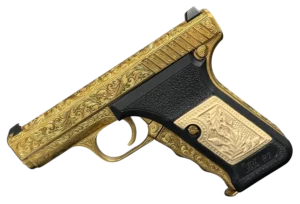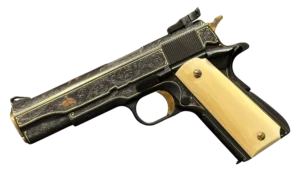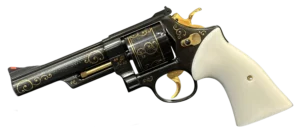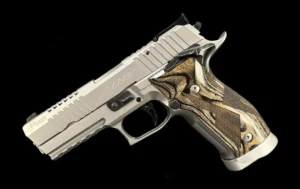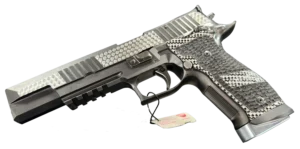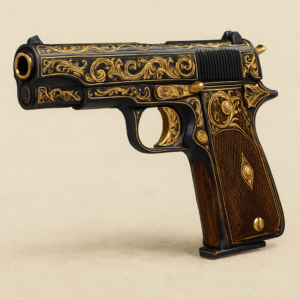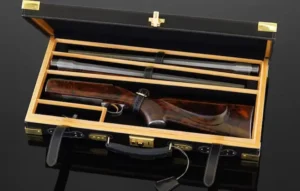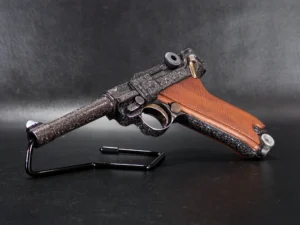Key Takeaways:
- Every classic firearm is more than metal—it’s a story you can hold: Behind every antique gun is a human moment: a soldier’s last stand, a sheriff’s daily sidearm, or a craftsman’s proudest creation. When you collect these firearms, you’re not just curating old gear—you’re collecting lives, turning points, and whispers from another time.
- The soul of gun collecting lies in the hunt, the craft, and the community: Sure, there’s the thrill of scoring a rare Luger or Colt—but what keeps collectors hooked is the whole journey: digging into research, swapping stories at shows, and preserving a hands-on legacy that’s fading fast. It’s part obsession, part education, and part shared love for things that still speak, even when silent.
- Caring for your collection isn’t just maintenance—it’s stewardship: You don’t need a vault and white gloves to do it right. But good storage, smart documentation, and knowing the legal ropes? That’s how you honor these pieces for the long haul. Because collecting isn’t just about owning—it’s about keeping history alive, one clean bore and hand-rubbed stock at a time.
There’s something magnetic about old guns. Maybe it’s the patina on aged steel, or the feel of walnut grips shaped by time and history. Or perhaps it’s the stories—quiet, powerful tales each one carries from another place, another life. Whatever the reason, collecting classic firearms isn’t just a hobby. For many, it’s a full-blown love affair with history, craftsmanship, and the deep satisfaction of preserving something significant.
Holding History in Your Hands
Antique firearms aren’t just museum relics or tools that once sparked thunder—they’re vivid chapters from the past, made of blued steel and polished wood. They’re reminders of turning points in human history. A flintlock musket might whisper tales from the American Revolution, when freedom was still a fragile idea. You look at it, and you can almost picture the smoky battlefield, hear the orders shouted over cannon fire.
And then there are the revolvers of the Old West. Now, these are the stuff of legends—think dusty saloons, poker tables, and showdowns at high noon. They weren’t just for show. They were daily tools of survival, justice, and sometimes infamy. Carried by cowboys, lawmen, and outlaws alike, these guns carry echoes of frontier grit and danger.
Each classic firearm doesn’t just sit quietly in a display case. It stands witness to the lives it touched, the places it’s been, and the moments—big or small—that helped shape history.
The Magic Is in the Craft
Let’s be honest: modern firearms might be more precise or high-tech, but they often lack the soul that defines antique guns. Older firearms were crafted by hand, not just by machines. There’s a kind of poetry in their imperfections—a hand-filed trigger guard, or an engraving that was done one hammer tap at a time.
These weren’t products rolling off an assembly line. They were built by craftspeople who knew their way around metal and wood—gunsmiths who treated each firearm like a signature piece. Some were apprentices learning the trade; others were masters passing down secrets no book could teach.
Look closely at a 19th-century sidearm, and you’ll notice the flourishes: scrollwork etched along the barrel, polished stocks shaped from deep-toned walnut or cherry, maybe even mother-of-pearl inlays if it was a presentation piece. The metal-to-wood fit feels snug and deliberate—almost as if it had grown that way.
Each one is a singular creation, a snapshot of what one pair of hands could do with a forge, a file, and years of know-how.
When Guns Were Cutting-Edge
It’s easy to forget, but back then, these antique firearms were the bleeding edge of technology. Revolutionary, even. The introduction of the percussion cap, for instance, was a total game-changer. No more fiddling with loose powder and flint; suddenly, guns became faster, more reliable, and way easier to use under pressure.
The bolt-action rifle? It redefined battlefield accuracy. Lever-action repeaters? They changed the way the West was settled. Firearms have always evolved in step with military needs and mechanical innovation, and collecting these classics gives you a front-row seat to that evolution.
What’s fascinating is how you can trace that progress through a well-chosen collection. You’re not just admiring old metal—you’re looking at the stepping stones that led to the modern firearms we know today.
And here’s the kicker: the inventors behind these breakthroughs were often tinkerers working in barns or small workshops, chasing ideas late into the night. Their ingenuity still echoes in the guns they left behind.
So You Wanna Start a Collection?
Jumping into firearm collecting isn’t just about buying what looks cool (although let’s be real, that’s part of the fun). It’s about learning, exploring, and discovering what resonates with you. It’s also about patience—some of the best finds require time, travel, and a great deal of curiosity.
But don’t let that intimidate you. The journey is half the reward.
Learn the Lay of the Land
Before proceeding, become familiar with the basics. Pistols, revolvers, rifles, shotguns—they each have their own quirks and histories. Start by understanding how they work, what they were used for, and the context in which they originated.
What’s the difference between a flintlock and a percussion pistol? Why does barrel length matter on an early Winchester? What’s the deal with calibers like .36 Navy or .45 Colt? These details matter—not just for collecting, but for appreciating what makes each piece unique.
The more you learn, the more certain firearms will start calling your name.
Figure Out What You’re Into
Every collector has a lane, even if it’s a wide one. Maybe you’re all about Civil War relics, or maybe you’re obsessed with early German automatics. Some collectors chase rare serial numbers. Others are after guns from specific manufacturers—think Colt, Winchester, or Mauser.
Whatever it is, narrowing your focus a little can actually make collecting more enjoyable. It gives your hunt some direction. You’re not just buying to buy—you’re curating something that reflects your personality, your interests, your version of history.
Dig Into the Details
The real magic happens when you research the heck out of every piece you find. Don’t just rely on seller info—pull out books, dig through archives, check serial number ranges, look for matching parts.
Who owned it? Where was it made? Was it military-issued or a civilian version? Does it have any markings that suggest a special purpose or modification?
And yes, keep good records not just for future resale value, but for your own reference. Over time, you’ll build a personal archive that connects every piece in your collection with its rightful story.
Connect With the Tribe
This might be one of the most underrated parts of collecting: the community.
Collectors love to talk shop. Join a local collector’s club, go to gun shows, browse online forums—however you plug in, you’ll find a network of people who are just as obsessed as you are. And they’re usually more than willing to share tips, trade stories, or point you toward your next great find.
Sometimes the best part of finding a rare revolver isn’t the gun itself—it’s the conversation you had at a small-town gun show that led you to it.
Pistols That Shaped History
Let’s zoom in for a minute. The world of classic pistols and handguns is rich with icons—guns that not only revolutionized design but became cultural symbols. These aren’t just collector favorites; they’re part of the collective memory.
Colt Single Action Army — The Gun That Won the West
You’ve probably heard it referred to as the “Peacemaker,” and for good reason. First introduced in 1873, this six-shooter became synonymous with the American frontier. Cowboys carried it, sheriffs swore by it, and outlaws… well, let’s just say they knew it well.
What makes it so collectible? For one, it was beautifully simple—a robust, reliable revolver that just worked. But more than that, it became an icon of American grit. It starred in Westerns, showed up in dime novels, and found its way into countless leather holsters across the West.
To hold one is to have a piece of Americana.
Luger P08 — German Precision With a Side of Drama
This one’s unmistakable. With its angled grip and toggle-lock action, the Luger P08 is as distinctive as they come. Designed in the early 1900s and widely used during both World Wars, it wasn’t just a pistol—it was a statement.
Collectors love Lugers not just for their function but for their flair. The engineering is tight, the ergonomics surprisingly modern. And thanks to its wartime pedigree, each Luger has its backstory—some issued to officers, others captured and brought home as souvenirs.
Even non-collectors recognize the silhouette. It’s that iconic.
M1911 — Built for War, Loved Ever Since
When John Browning designed the M1911, he probably had no idea it would become a staple of both military arsenals and private collections for over a century. First adopted by the U.S. military in 1911, this semi-automatic .45 served through two World Wars, the Korean War, the Vietnam War, and beyond.
It’s sleek, reliable, and surprisingly comfortable to shoot. The M1911 is one of those rare firearms that’s both a workhorse and a collectible, equally at home in a shooting match or a display case.
For many collectors, a 1911 is a rite of passage. And once you get one, good luck stopping at just one.
Treating Them Right: Care, Storage, and Smarts
You don’t just toss a classic revolver in a drawer and forget about it—at least, not if you care about keeping it in good shape. Collecting is as much about preservation as it is acquisition.
Storage Matters
Humidity is the enemy. Store your firearms in a cool, dry place—ideally a safe with a dehumidifier or desiccant packs. And if you’re displaying them, do it smartly. Avoid direct sunlight and temperature swings. That polished wood and blued steel might look tough, but they’re surprisingly vulnerable to moisture and neglect.
Some collectors go all-out with custom display cases. Others prefer classic safes. Whatever your approach, the goal is the same: protect the guns so they last another hundred years.
Clean With Care
You don’t need to go overboard with cleaning, but regular maintenance ensures everything works and looks its best. Use proper tools—no kitchen rags or multipurpose oil. Invest in a high-quality cleaning kit that includes bore brushes, patches, and lubricants specifically designed for firearms.
Pay close attention to the action, the bore, and any areas where wood meets metal. That’s where rust loves to creep in.
Know the Law
It may seem obvious, but it’s worth repeating: familiarize yourself with the legal landscape. Gun laws vary wildly depending on where you live. Some antique firearms are exempt from modern regulations, but others aren’t. Always double-check before buying, selling, or even transporting a piece across state or international borders.
If you’re unsure, consult with an attorney familiar with firearm law or reach out to experienced collectors in your network. Better safe than sorry.
Insure What You Love
If your collection has any value—and let’s be real, it probably does—get it insured. Accidents happen. Fires, theft, flooding—you name it. Work with an insurance provider that understands collectibles, and ensure your documentation is thorough and up to date.
Appraisals help too. Not only do they guide you on insurance, but they also give you a clearer picture of how your collection is growing in value.
Why We Keep Coming Back
Collecting classic firearms is about so much more than the guns themselves. It’s about connection—to the past, to a craft that’s slowly vanishing, and to a community of people who care deeply about preserving that heritage.
You start with one piece—maybe something your grandfather passed down, or a lucky find at a show—and suddenly you’re hooked. Each new addition brings new questions, discoveries, and a deeper appreciation for the history behind the steel.
And let’s not forget the thrill of the hunt. The chase is real. That feeling when you spot something rare, negotiate a deal, and finally add it to your display—it’s addictive.
Keep the Fire Burning
So what’s next?
Keep asking questions. Continue attending shows, meeting new people, and sharing your stories. Keep reading, researching, polishing, and preserving. Whether you’re collecting for fun, investment, or sheer passion, there’s always more to learn and appreciate.
Because in the end, collecting classic firearms isn’t just about ownership. It’s about stewardship. You’re not just a collector—you’re a caretaker of stories, preserving them for the next curious soul who wonders what it felt like to hold history in their hands.
Frequently Asked Questions
Classic firearms are historically significant, feature exceptional craftsmanship, and often represent technological innovation for their time. Their rarity and connection to historical events also contribute to their allure.
The value depends on several factors, including the firearm’s condition, rarity, provenance, historical importance, and market demand. Consulting with experts or referencing auction results can help establish an accurate value.
New collectors should research thoroughly, focus on a specific era or type, verify authenticity through documentation or experts, and prioritize quality over quantity. Starting with a trusted dealer is also recommended.
While some classic firearms can appreciate in value, their investment potential depends on market trends, rarity, and condition. Many collectors emphasize passion and appreciation over financial returns.
Iconic examples include the Colt revolver, Winchester rifle, Mauser pistol, and Browning shotgun. Their rich histories and cultural significance make them highly sought after.



